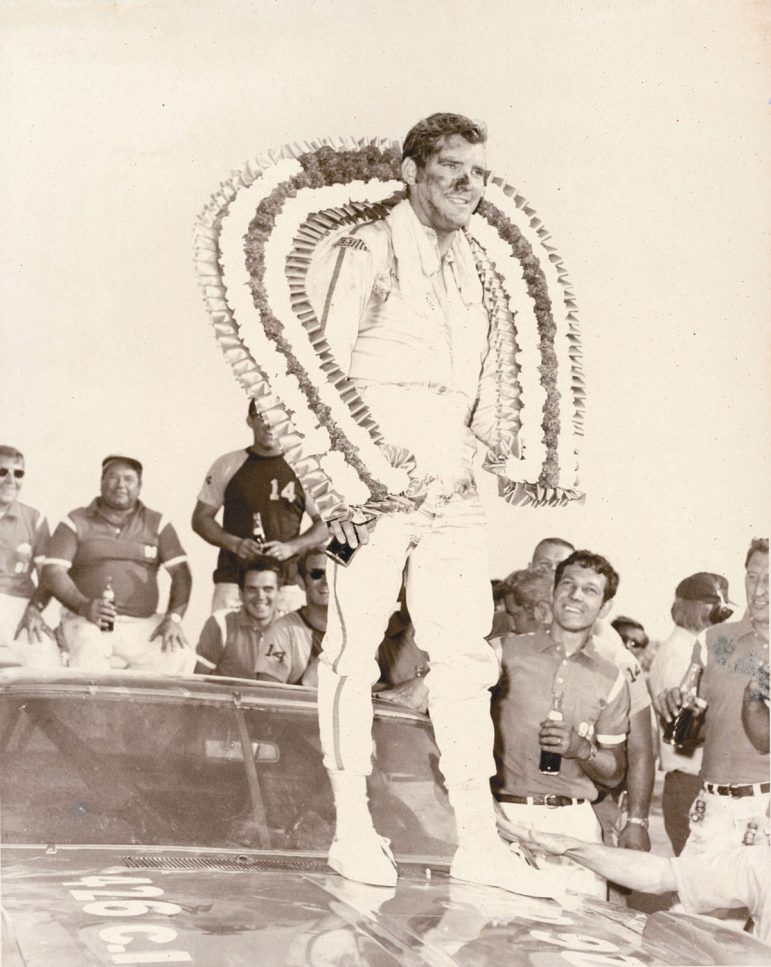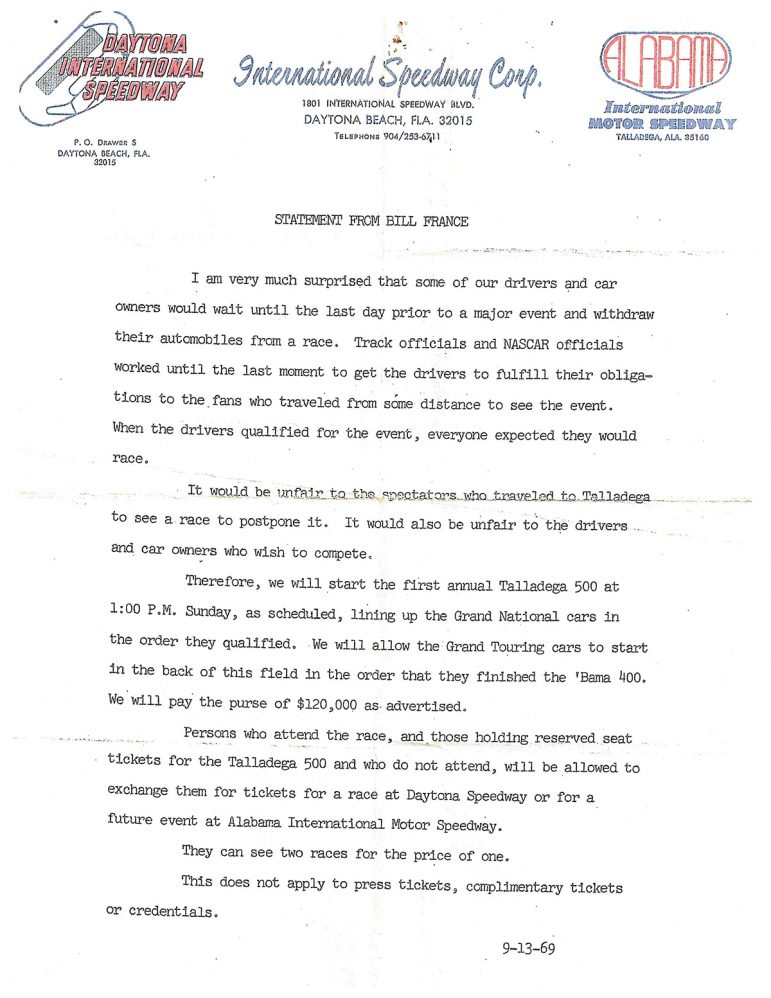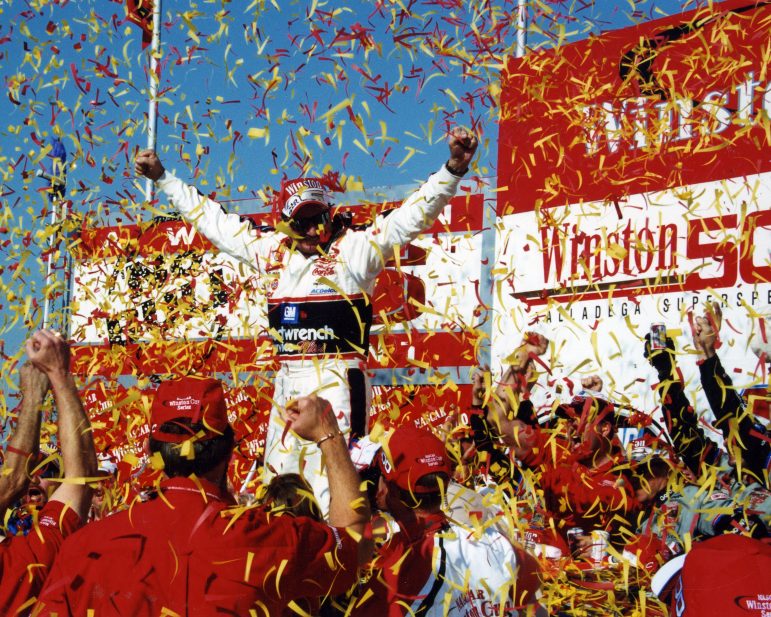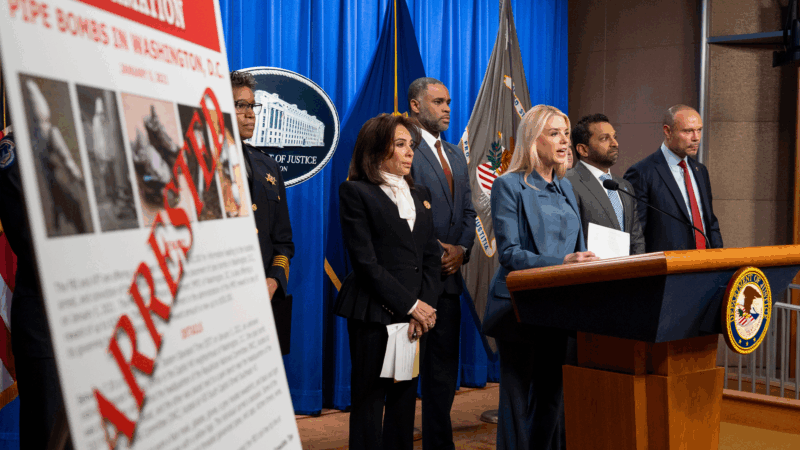Talladega Superspeedway Turns 50
Tens of thousands of fans are expected to pour into the Talladega Superspeedway for the big stock car race this weekend. It will also be a celebration of the iconic track’s 50th anniversary. It is home to unrivaled speed and, of course, tremendous crashes. Talladega’s status as a crown jewel of NASCAR was intended from the beginning.
NASCAR founder Bill France wanted something big, a track longer and faster than any other. That vision required land. His friend Bill Ward stepped in. He’s an insurance agent in Anniston and at the time drove stock cars on the side.
“He told me if I could find him a thousand acres of land close to an interstate, he would come look at it,” Ward says.
Ward zeroed in on a closed U.S. Air Force base the government had sold to the city of Talladega for a dollar. He worked to sell city leaders on the idea. Ward says France considered a site in South Carolina, but France liked that the Alabama location was close to Birmingham and Atlanta. Plus, Ward says local leaders in South Carolina were not too keen on the project. France bought the Talladega property and started construction in 1968.
“I’d go out there and watch ‘em and watch the bulldozers,” Ward says.
The track opened in September 1969 as the Alabama International Motor Speedway. Twenty years later it became the Talladega Superspeedway.
“I taught my daughter how to drive out there,” Ward says. “It’s wide open. She can’t hit anything.”
The track is monstrous. It’s the longest in NASCAR at 2.66 miles. It has higher banking than Daytona and is a lane winder. All that means Talladega is built for speed.
Four-time Talladega winner Bobby Allison says he was amazed preparing for the inaugural race.
“My first lap around the track was like 2.5 miles an hour faster than the fastest lap by anybody up to that point,” Allison says. “I was really on a high about the whole deal.”
Speed nearly killed the first race. The asphalt was rough. The tires weren’t designed to handle the pace and kept shredding. Most of the top drivers, including Allison, walked out the day before. Bill France recruited drivers from other divisions to fill out a line-up, so the race went on.

Richard Brickhouse won the inaugural Talladega 500 on September 14, 1969, a race nearly upended by a drivers boycott. (Photo by ISC Archives)
“He just about lost the farm on that deal and he and his wife Annie really put everything into the track and they had to run a race that day,” racing historian Buz McKim says.
As a consolation to fans, France offered anyone with a ticket, whether they attended the race or not, to exchange it for a race at Daytona or a future Talladega race.

The statement Bill France issued to fans on Sept. 13, 1969 after the driver walkout the day before the first Talladega 500. (Courtesy Talladega Superspeedway)
He patched things up with the drivers and they figured out how to improve track conditions. That led to years of what’s considered some of the most exciting racing in NASCAR.
The track also gained a reputation for being cursed because strange things seemed to happen there. In 1973, Bobby Issac dropped out mid-race saying he heard a voice telling him to leave. A freak explosion in the pits killed Richard Petty’s brother-in-law. Not to mention a litany of spectacular crashes termed “the big one.”
Stories vary, but the lore is the track is built on a Native American burial ground or they cursed it when they were forcibly removed in the 19th century.
McKim calls that bunk. Still, Talladega is the only track where he watches with a sense of dread.
“You have to sit there and you have to watch it because something crazy’s going to happen and you don’t want to miss it,” McKim says.
The craziness seemed to work for Dale Earnhardt, Sr. He won at Talladega 10 times, the most of any driver.

Dale Earnhardt Sr. came from 18 spots back in the final five laps to win the Winston 500 on October 15, 2000. This was his 10th career victory at Talladega, the most of any driver, and his final victory before his death a few months later. (Photo by ISC Archives & Archives via Getty Images)
Bobby Allison had a brush with disaster in 1987. His engine blew shortly into a race. Debris ripped through a tire and the car went airborne. It tore through a stretch of protective railing separating the fans from the track.
Allison walked away, although five spectators were injured. It’s considered the prime reason NASCAR instituted restrictor plates to slow down cars.
In nearby Lincoln at Rick’s Crossroads Grille, staff is gearing up for the influx of visitors. One item on the menu is the Ricky Kabobby, a nod to the driver in the movie “Talladega Nights.” Owner Rick Seal says he looks forward to race week.
“We’ve had people from everywhere. We’ve had people from France, Europe,” Seal says. “We get people from all over the country.”
Attendance at NASCAR tracks has dropped over the last decade. Talladega tore out 18,000 seats five years ago. This weekend, officials there will unveil $50 million in new amenities aimed at attracting the next generation of fans. They hope Talladega’s speed and mystique won’t be a thing of the past.
Pipe bomb suspect told FBI he targeted U.S. political parties, memo says
The man accused of placing two pipe bombs in Washington on the eve of Jan. 6, 2021 told investigators someone needed to "speak up" for people who believed the 2020 election was stolen, prosecutors said Sunday.
Chinese military stages drills around Taiwan to warn ‘external forces’
The drills came after Beijing expressed anger at U.S. arms sales, and a statement by Japan's prime minister saying its military could get involved if China were to take action against Taiwan.
Trump and Netanyahu to meet in Florida at a crucial moment for the Gaza ceasefire
President Trump could use the face-to-face at his Mar-a-Lago estate to look for ways to speed up the peace process, as Israel's leader has been accused of not pushing his side to move fast enough.
‘Bomb cyclone’ forecasted to bring heavy snow, blizzard conditions and dangerous travel
A 'bomb cyclone' is intensifying severe winter weather for millions of people across the U.S. The system is expected to knock out power and disrupt holiday travel.
Russia sends 3 Iranian satellites into orbit, report says
The report said that a Russian rocket sent the satellites on Sunday from a launchpad in eastern Russia.
Viral global TikToks: A twist on soccer, Tanzania’s Charlie Chaplin, hope in Gaza
TikToks are everywhere (well, except countries like Australia and India, where they've been banned.) We talk to the creators of some of the year's most popular reels from the Global South.







